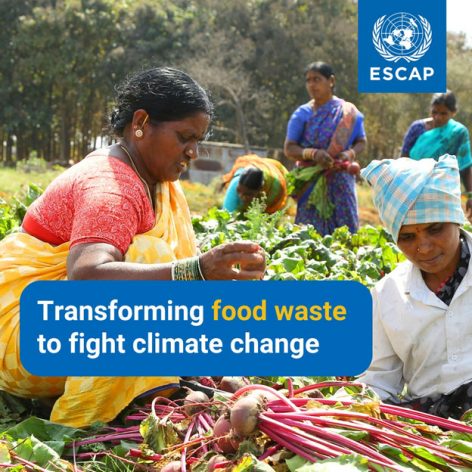
BANGKOK, Thailand, Oct 14 (IPS) – World Food Day 2024. While the impact of COVID-19 and the war in Ukraine against food system disruptions Although widely publicized, the underlying vulnerabilities of the Asia-Pacific food system had been steadily growing long before these crises unfolded.
A comprehensive framework and index for food system risk assessment, INFERdeveloped by ESCAP and the World Food Program, highlights the growing population that is particularly vulnerable to food system disruptions. Of the six recognized dimensions of food security trends in the risks associated with markets and financial policies are the most concerning.
Amid record-breaking food price increases caused by supply chain disruptions and energy price increases, people in the Asia-Pacific region experienced the most important increase of all regions in terms of the cost of a healthy diet in 2022, leaving approx one in three people in Asia and the Pacific cannot afford a healthy diet.
There are long-term consequences; Poor health is a major contributor to poverty and loss of economic productivity.
The consequences of these recent disruptions underscore the need to take a closer look at the disruptive potential of climate change. According to ESCAP Risk and resilience portalMore than half of the climate impacts are borne by the agricultural sector, due to drought, floods and high temperatures.
East and Northeast Asia are at risk of the largest total agricultural losses, exceeding $250 million under all climate scenarios, while Southeast Asia is expected to experience the largest GDP impact, with potential agricultural losses of up to 6 percent of the GDP.
Climate-related events threaten agricultural production and place enormous pressure on the livelihoods of those dependent on the sector. The ILO estimates that approximately 363 million people in Asia and the Pacific are employed in the agricultural sector, representing almost a third of the region’s workforce. These workers, the majority of whom work informally and lack rights and access to social protection, are at increased risk of income loss and food insecurity.
But the impact of disruptions goes much further. Disruptions in food production, processing, distribution and consumption ripple through economies and impact the livelihoods of millions of people – from urban consumers to small businesses and global markets.
Food system crises most affect the poorest households because they spend a much larger share of their income on food, pushing both the near-poor and those who have just escaped poverty back into poverty.
The COVID-19 pandemic, which triggered a wave of social protection investments and interventions, has demonstrated the crucial role of social protection systems in ensuring people’s well-being in times of crisis. Universal, life-cycle and multi-pillar social protection systems can ensure minimum income security for all people, increase their resilience and enhance food security.
For example, a non-contributory child or maternity benefit could alleviate the consequences negative consequences of food insecurity on children and mothers of newborns and protect them from climate-induced disruptions to food systems and subsequent crises.
Rather than relying on ad hoc approaches or one-off responses to sudden crises, adaptive and shock-responsive social protection systems, grounded in strong legislative and policy frameworks, offer one of the most effective means of increasing people’s resilience.
By increasing benefit levels or expanding the coverage of existing benefits in response to events or shocks and crises, these social protection mechanisms – whether through cash transfers or social insurance – help prevent poverty traps and allow communities to recover faster.
ILO estimates that only 55 percent of the population in Asia and the Pacific has access to at least one social protection benefit, excluding healthcare, leaving 45 percent without any protection. According to ESCAP SPOT simulator Providing universal non-contributory social protection benefits throughout the life cycle of children, persons with disabilities, mothers of newborns and the elderly would reach an average of 88 percent of the population in Asia and the Pacific countries and eliminate poverty by as much as 84 percent (figure X).
Despite the potential reach of universal non-contributory social security benefits and their role as a bulwark against poverty and food insecurity, countries in the region spend an average of only 8.2 percent of GDP on social protection, compared to the global average of 12 .9 percent according to the ILO.

ESCAP’s newest flagship publication, Protecting our future today: social protection in Asia and the Pacificpresents social protection as a powerful policy tool to build resilience against future shocks and disruptions that threaten populations in Asia and the Pacific, while enabling a just transition to a zero-emissions future and promoting inclusive socio-economic development accelerated.
Ongoing megatrends and emerging risks, in addition to the growing fragility of food systems, will continue to strain the social fabric of Asia and the Pacific, especially for those already in vulnerable situations. In the face of these challenges, the transformative power of social protection will be critical to protect people from future risks, promote resilience and empower people in Asia and the Pacific for an equitable future.
Areum Han is Associate Social Affairs Officer, Social Development Division, United Nations Economic and Social Commission for Asia and the Pacific (ESCAP).
Yi-Ann Chen is Associate Economic Affairs Officer, Environment and Development Division, United Nations Economic and Social Commission for Asia and the Pacific (ESCAP).
IPS UN Office
© Inter Press Service (2024) — All rights reservedOriginal source: Inter Press Service







